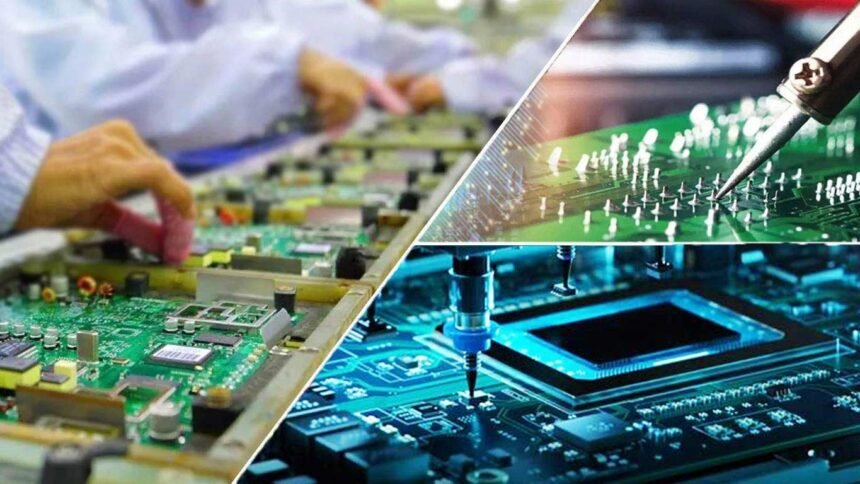Mumbai, July 22, 2025 — Today marks a pivotal moment in global technology and economic policy. India has unveiled a groundbreaking Electronics Components Manufacturing Policy (ECMP 2025–2030), aiming to reduce imports, drive innovation, and position India as a top electronics exporter. Meanwhile, rising global tariff threats and geopolitical friction underscore the urgency of supply chain resilience. Together, these developments redefine India’s role in the evolving world economy.
India’s Bold Manufacturing Leap
Andhra Pradesh Chief Minister N. Chandrababu Naidu announced ECMP 2025–2030 today—a strategic industrial policy under the national Make in India banner. The state targets $50–100 billion in investment, aiming to drastically cut reliance on electronic imports. Last year, India imported about $70 billion worth of circuit boards alone.
The Policy Vision:
- Regional specialization: Industrial zones in Rayalaseema—such as Tirupati, Sri City, and Orvakal—are prioritized for land availability and infrastructure.
- Tech clusters: Amaravati is set to focus on quantum computing and next-gen research; Visakhapatnam will become an IT and ITeS hub.
- Ecosystem emphasis: Plans include co‑working spaces, startup incubators, and innovation labs to nurture component manufacturing talent and job growth.
The aim: to shift India from basic assembly to dominance in electronics design, production, and global exports.
🌐 Rising Trade Tensions: Global Tariff Risks
At the same time, global markets face the spectre of looming tariffs. Industry leaders have dubbed August 1 “Zombie Liberation Day”—a deadline for potential trade levies that could undermine semiconductor‑dependent products and block global supply chains.
Investment expert Arvind Sanger warns that escalating protectionist policies in major economies may dampen global growth. In this environment, India’s push for local component production is not just timely—it’s strategic.
🔄 India’s Ecosystem Advantage
1. Domestic Resilience
ECMP positions India to not just consume electronics but to produce critical infrastructure—for smartphones, EVs, defence, and more.
2. Global Competitiveness
With dedicated hubs and policy clarity, India can attract global investment from firms seeking alternatives to China-centric supply chains.
3. Skilling & Startups
By integrating co-working spaces and innovation labs into its ecosystem model, Andhra Pradesh aims to create 2–3 million jobs while boosting exports.
4. Policy Alignment
The move aligns with India’s larger PLI reforms and semiconductor strategy—positioning the nation for leadership in the global electronics value chain.
🧭 A Modern Tech Shift
| Global Trend | India’s Response |
|---|---|
| Trade protectionism | Diversified, local production |
| Semiconductor dependence | Indigenous component capability |
| Global tech restructuring | Domestic export orientation |
| Skills gap & job creation | Innovation hubs + co-work spaces |
India’s strategy today reflects a vision for digital self-sufficiency and resilient economic structure.
India’s new electronics policy and supply chain strategy is a world‑changing pivot: it signals ambition, foresight, and readiness to lead in global technology segments. With mounting geopolitical trade risks, the move couldn’t be more timely. Manufacturing, investment, innovation—India is rising as a tech epicenter.
India’s semiconductor manufacturing growth 2025 – electronics industry boost and global supply chain impact
“Exciting News! Sejal News Network is now on WhatsApp Channels
Subscribe today by clicking the link and stay updated with the latest news!” Click Here
Our App : Click Here
📰 Latest from Sejal News Network
- Daily Horoscope for 13 Dec 2025 — Saturday
- Akshaye Khanna Opens Up About Singlehood: A Life Built on Freedom and Clarity
- Daily Horoscope for 12 Dec 2025 — Friday
Published by Sejal News Network


